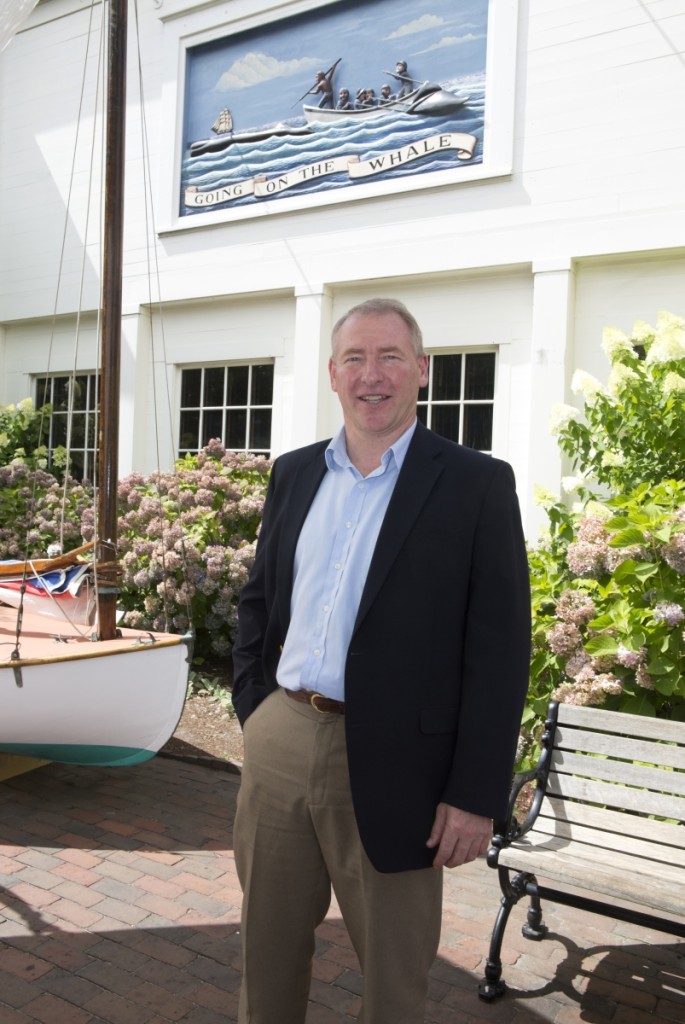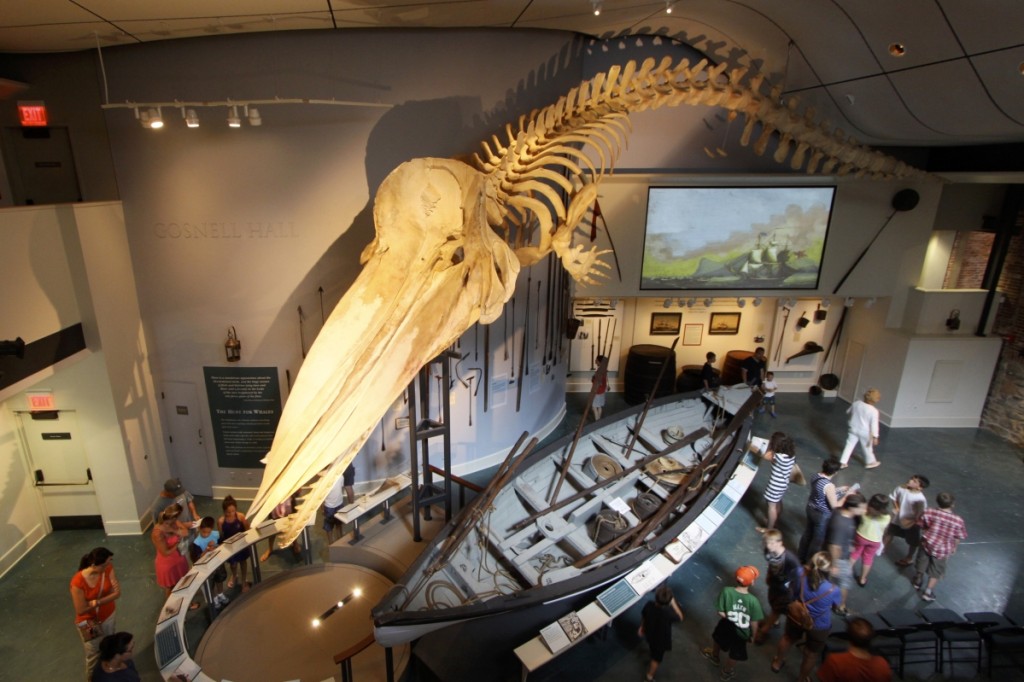In the fall of 2017, James Russell joined the Nantucket Historical Association (NHA) as its new Gosnell executive director. Russell came to NHA from the New Bedford Whaling Museum, where he had served as president and chief executive officer since 2008; his CV also includes a stint as the director at the Herreshoff Marine Museum / America’s Cup Hall of Fame. A year into his tenure in Nantucket, the NHA is not only celebrating its 125th birthday but is providing the loan exhibition for the 2019 Winter Show in New York. Antiques and The Arts Weekly caught up with Russell to see what else he has in store for the museum at this busy point in its history.
When you came on board, you were vocal about the importance of education in sowing the seeds for long-term support of NHA. A mentorship program at Nantucket High School and expanding the internship program to off-island students were some of the initiatives you pledged – have these initiatives taken place? Are there additional initiatives you’d like to see implemented?
Yes, these initiatives and others with similar intent were rolled out and are being received very well. It is rewarding to see high school students deeply immersed in winter projects or corps of college interns working throughout the year. Interestingly, colleges are looking at us for semester-long class projects which allows for even deeper engagement. Now that these seeds are sown, we look to deepening our efforts with family-learning and making the presentations and exhibits accessible to a wider age range across all historic sites.
Is it fair to say that Nantucket’s whaling history is what brings most visitors to NHA? What else would you like them to learn about Nantucket and its history?
Certainly, the whaling story is the most developed at the NHA but by no means should it be our only story. I would argue that the whaling story is a product of Nantucketers’ resourcefulness and ingenuity. From entrepreneurs forging the colonies’ first global industry to abolitionists and civil rights leaders forcing societal change in the Eighteenth and Nineteenth Centuries, through to its art colony and popular destination as a resort town in the Twentieth Century, Nantucket’s small landmass belies its strategic, economic, political, artistic and cultural importance – this is the story that we need to be shouting from the roof-walks.
Nearly a year ago, the NHA purchased a building behind the downtown whaling museum. At the time, plans for the building were not disclosed; have decisions been made on what the NHA will do with the building?
The board has commenced preliminary investigative work for 4 Whalers Lane. Beforehand though, we have some tactical projects to address. We want to establish a cluster of experiences at our two historic homes on Main Street, renovate a strategically located 1846 building, and introduce a new Fine Arts wing at the Whaling Museum campus.
Are there gaps in NHA’s collection you’d like to see filled or areas you’d like to see enhanced or fleshed out?
Absolutely, every collection has gaps that need closing. Fortunately, the NHA has a Friends group who looks after us. As we open up more exhibition space, we will have the ability to tell more of our stories. We are very interested in stories that resonate with audiences today. The NHA can talk meaningfully in a historical context about current affairs such as immigration, tariffs and trade, tolerance and rights and race. These are important topics that need to be discussed.
The NHA was established in 1894, which means that it will celebrate its 125th birthday in 2019. Do you have special events planned to commemorate this milestone?
We celebrate three concurrent anniversaries in 2019. The NHA is 125 years old this year and we plan to mark this with special events throughout the year. Secondly, the island celebrates 360 years since English settlers purchased it for 30 pounds of sterling and two beaver hats. Thirdly, Herman Melville’s 200th birthday reminds us of the enduring power of literature, with its concomitant connection to this charmed place.
Nantucket is a well-known summer destination for people around the world. What are the challenges the museum faces in the off months and how do you generate attendance?
I’m delighted to report that attendance hit a record high in 2018, well exceeding 100,000. Curiously, the fall has been quite busy. We are open free of charge to the community in the winter, so that will drive attendance then. During these months, and on an annual basis, we plan to take the show on the road, hence our delight at being invited to the Winter Show.
What does it mean to NHA to be the loan exhibitor for the 2019 Winter Show? Are there works you would have liked to have been able to send that you could / will not for myriad reasons?
This forum provides a wonderful opportunity for the Nantucket Historical Association to showcase its treasured collections. We highly value this opportunity and recognize its importance both for the NHA and the island. Our only regret is that there wasn’t room for the sperm whale skeleton!
-Madelia Hickman Ring






